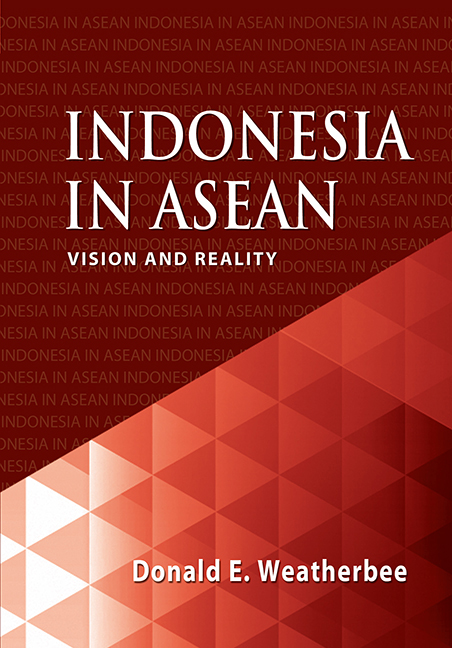Book contents
- Frontmatter
- Contents
- Editorial Note
- Acknowledgements
- About the Author
- Introduction
- I The Visible Indonesia
- II Indonesian Policy Foundations
- III Democracy in Indonesian Foreign Policy
- IV Islam in Indonesian Foreign Policy
- V Indonesia, ASEAN and Regional Political Stability and Security
- Conclusion
- Addendum
- End Notes
- References
V - Indonesia, ASEAN and Regional Political Stability and Security
Published online by Cambridge University Press: 21 October 2015
- Frontmatter
- Contents
- Editorial Note
- Acknowledgements
- About the Author
- Introduction
- I The Visible Indonesia
- II Indonesian Policy Foundations
- III Democracy in Indonesian Foreign Policy
- IV Islam in Indonesian Foreign Policy
- V Indonesia, ASEAN and Regional Political Stability and Security
- Conclusion
- Addendum
- End Notes
- References
Summary
In its original incarnation, the five-member ASEAN had two regional political and security functions. The first, and most immediate, was to reintegrate post-confrontation Indonesia into a peaceful regional framework as a non-threatening partner in cooperative activities. The second was to detach the region as a region from the pressures of the Cold War, despite the fact that two of the founding members — Thailand and the Philippines — were military allies of the United States and supporting the U.S. in the war in Vietnam. The second function was a prerequisite for Indonesia's joining since it clung firmly, in spirit at least, to its non-aligned credentials. In a declaratory manner this was accomplished through the proclamation of a Zone of Peace, Freedom, and Neutrality (ZOPFAN) and a Southeast Asian Nuclear Weapons Free Zone (SEANWFZ). From its debut, then, ASEAN has had a political and security subtext below its preferred narrative of functional cooperation.
The subtext, however, headlined the collective response of ASEAN's five members to Vietnam's Soviet-backed 1978 invasion and occupation of Khmer Rouge-led Cambodia. ASEAN's diplomatic opposition to Vietnam's fait accompli was accompanied by support, aided by China and the United States,to a Thailand-based armed Khmer resistance (Weatherbee 1985). As what became known as the Third Indochina War dragged on, Indonesia became concerned about the long-range implications of a bleeding stalemate. From Jakarta's perspective the continuation of the war threatened Indonesia's security. First, the only winner would be China and, second, a wasted Vietnam could not serve as a front line against future Chinese ambitions. Frustrated by what Indonesia saw as ASEAN's diplomatic dead end, Foreign Minister Mochtar unilaterally opened a channel to Hanoi to begin to find a way out (Weatherbee 1986). Faced with Mochtar's initiative, ASEAN gave it an ex post facto blessing by naming Indonesia its interlocutor with Vietnam.
Two lessons might be drawn from the diplomacy of ending the Third Indochina War. The first is that when Indonesia perceived that its security interests were not served by ASEAN, it acted unilaterally to defend them. In the Third Indochina War case, Indonesia's leadership in ASEAN was such that its partners had to follow suit or risk ASEAN's collapse. It remains to be tested if that would be the case today. The second lesson, unexplored here, is that ASEAN diplomacy was not the key to ending the war.
- Type
- Chapter
- Information
- Indonesia in ASEANVision and Reality, pp. 59 - 82Publisher: ISEAS–Yusof Ishak InstitutePrint publication year: 2013

